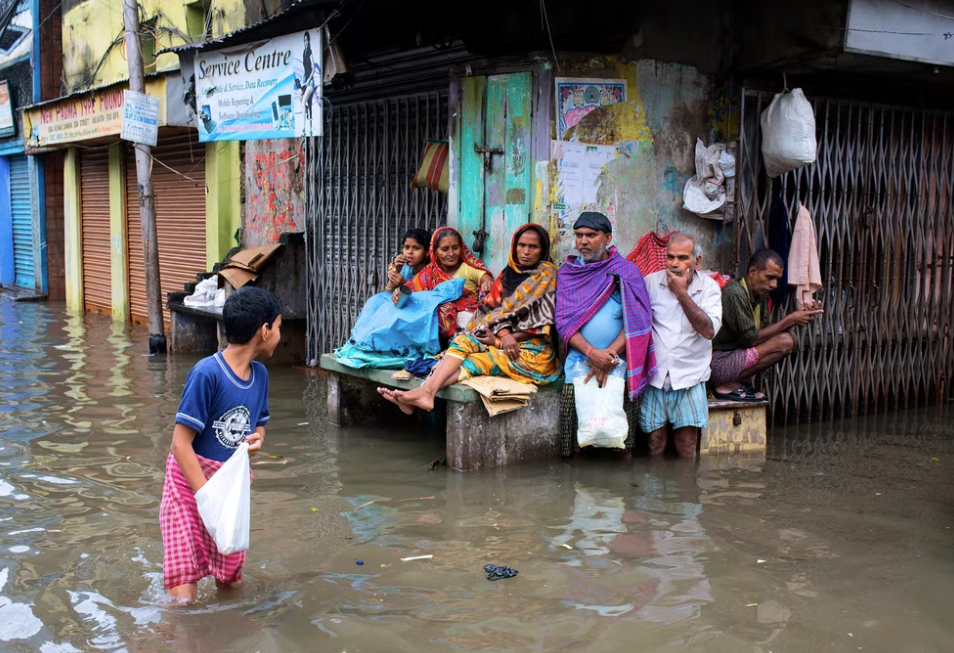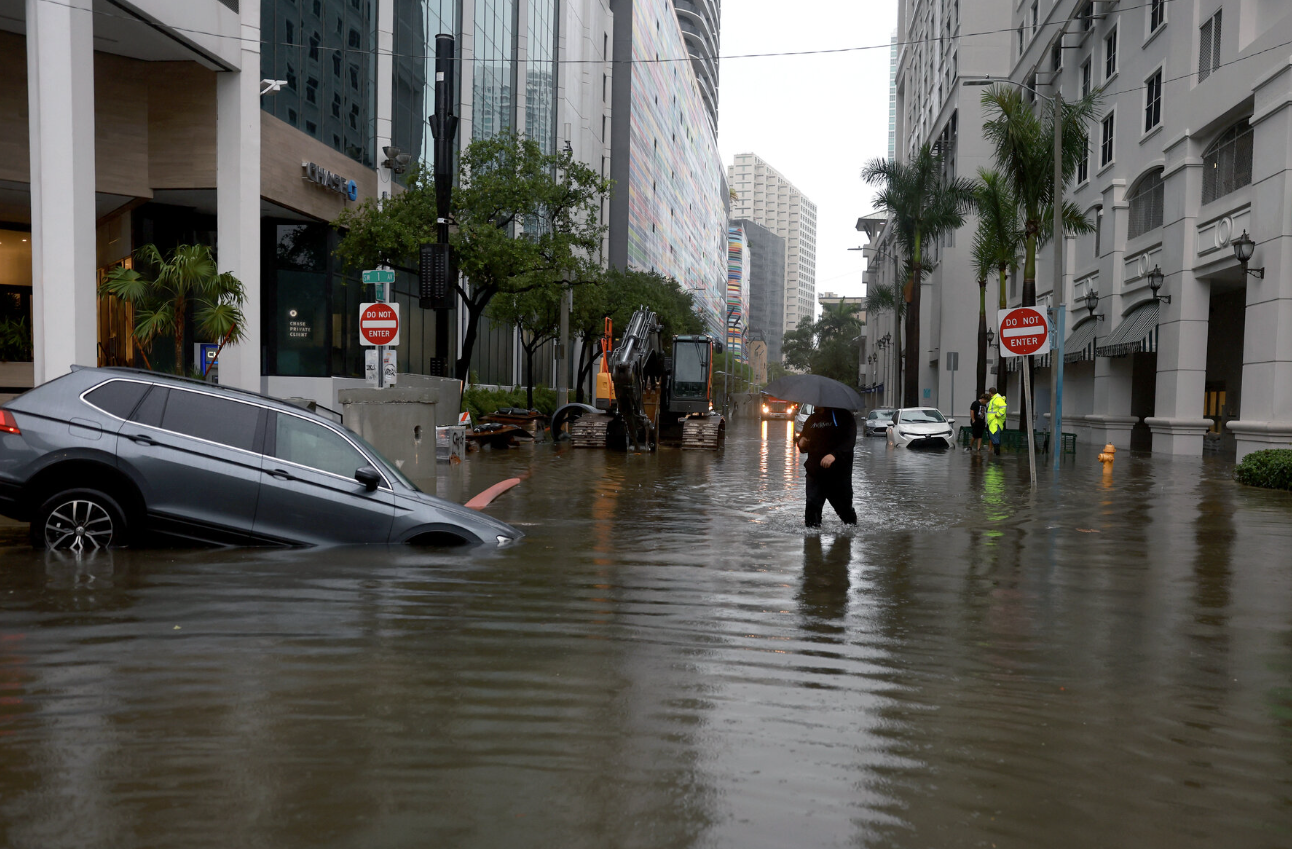1. Bangkok, Thái Lan

Heavy rainfall, rising water levels and annual groundwater extraction also contribute to flooding.
Bangkok is located at an altitude of 1.5 meters above sea level, and is still having a "sink rate" of 2-3 cm per year, much faster than other cities in the world. Research from 2020 indicates that the Thai capital will be the first to experience the full impact of global warming.
The ground of Bangkok is dense but soft, so flooding is easy. By 2030, most of the coastal areas of Tha Kham and Samut Prakan, Suvarnabhumi International Airport, could be submerged under water. Heavy rainfall, rising water levels and annual groundwater extraction also contribute to flooding.
Thailand's National Reform Council reports that the capital could be completely submerged in the next century. In order to overcome flood damage, in 2017, the city inaugurated the green infrastructure "Central Park Chulalongkorn" and improved other infrastructures.
2. Amsterdam, Hà Lan

The city famous in Europe for its rich nightlife is facing great danger of being submerged by water. The Netherlands is the lowest country in Europe, most of its territory is below sea level. Over the past century, the country has built many large dams to prevent floods, but there are still many historic floods that inundate tens of thousands of people, livestock, homes, cars as well as buildings and structures. other architecture.
Amsterdam, along with neighboring cities such as Rotterdam and The Hague, have low, flat land and are close to the northern sea. Despite the relentless efforts of leading scientists and flood prevention experts, Amsterdam is still at risk of being severely flooded in less than ten years. The country's system of dykes, dams and culverts must be closely monitored and continuously upgraded in the coming years.
3. Barsa, Ả Rập

People have struggled against diseases caused by persistent floods.
The Arab city of Basra is an important port city in Iraq. The city is located along the vast Shatt al-Arab river. Streams flow down to the Persian Gulf, along with an intricate network of canals and streams running through the city. The surrounding soft marshes make the area vulnerable to sea level rise.
Basra is a poor city. People have long struggled against diseases caused by persistent floods. Over the next decade or so, the situation could get worse.
In the face of increasingly severe natural disasters, scientists predict that Basra may be partially or completely submerged within the next 10 years, and people's lives may be much more difficult.
4. Georgetown, Guyana

For centuries, the city has protected itself from storms by building a "wall of the sea", but it seems to have not been effective.
Compared to the water level in tropical regions of the world, the water level rise in the city of Georgetown, Guyana is the easiest to observe and calculate. For centuries, the city has protected itself from storms by building its "sea wall," a massive 280-mile-long wall over the sea. 92% of Guyana's population lives in coastal cities like Georgetown, and the coastline is 0.5 to 1 meter below water level. The urgent situation requires the city to take urgent and ongoing solutions to prevent future catastrophic hazards.
5. Kolkata, Ấn Độ

People are used to flooding.
The capital Kolkata in the state of West Bengal, India is the next victim of the "water god". This place is famous for the unique and unique Durga Pujo indigenous festival, with a large number of tourists coming here every year. Flooding can affect cultural activities and preserve identity here. Poor people can only rely on the response measures of scientists and Indian authorities. The government of this country is currently facing pressure to monitor and come up with appropriate options to prevent climate change and turn the situation around.
6. New Orleans, Mỹ

Oil and gas drilling also aggravated the flood situation.
New Orleans is currently one of the fastest sinking cities in the world, with some places recording a rate of 2 inches (5.08 cm) per year. A 2016 NASA study predicts that entire cities are likely to be submerged by the end of the century.
In 1895, only 5% of the area of New Orleans was submerged in sea water, by 1935 that had increased to 30%. Currently, more than half of the city's width is below sea level. Unfortunately, many parts have been sunk beyond repair.
Not only the geographical location of the delta makes the area prone to flooding, but human activities such as oil and gas drilling also aggravate the situation. Despite having a well-known dyke system, the city still has to constantly update new flood prevention initiatives, as well as reinforce the dike system to prevent floods.
7. Venice, Ý

It is predicted that the phenomenon of subsidence and high tide will occur more and more.
The gentle waterway system running around the blocks has long become a beautiful image in the eyes of many international tourists. If you love Italy, you may be very sorry to hear that Venice is in danger of being engulfed by floods and high tides in the near future. Venice is being submerged about 0.08 inches. In 2018, the Lagoon Canal was hit by a series of violent storms, causing the worst flooding in a decade, with water levels reaching record highs.
In 2019, 90% of Venice was flooded due to coastal erosion and groundwater surge. The flood barrier was designed in 1980 and built in 2003 but has not been completed until now. It is predicted that the phenomenon of subsidence and high tide will occur more and more.
8. Miami, Mỹ

Along with New Orleans, Miami is also in the top of the city most likely to be submerged by sea water. Flooding contaminates drinking water, causing damage to infrastructure throughout the city. In addition to urgent climate change response measures, Miami also focuses on upgrading buildings, building houses above water level.
Business Insider quoted an environmentalist about the current situation: "There is almost no scenario that Miami can survive until the end of this century." These predictions are seen as warnings of floods that are likely to wipe out beaches in the next few years. The government certainly needs a lot of investment to save Miami's natural landscape.